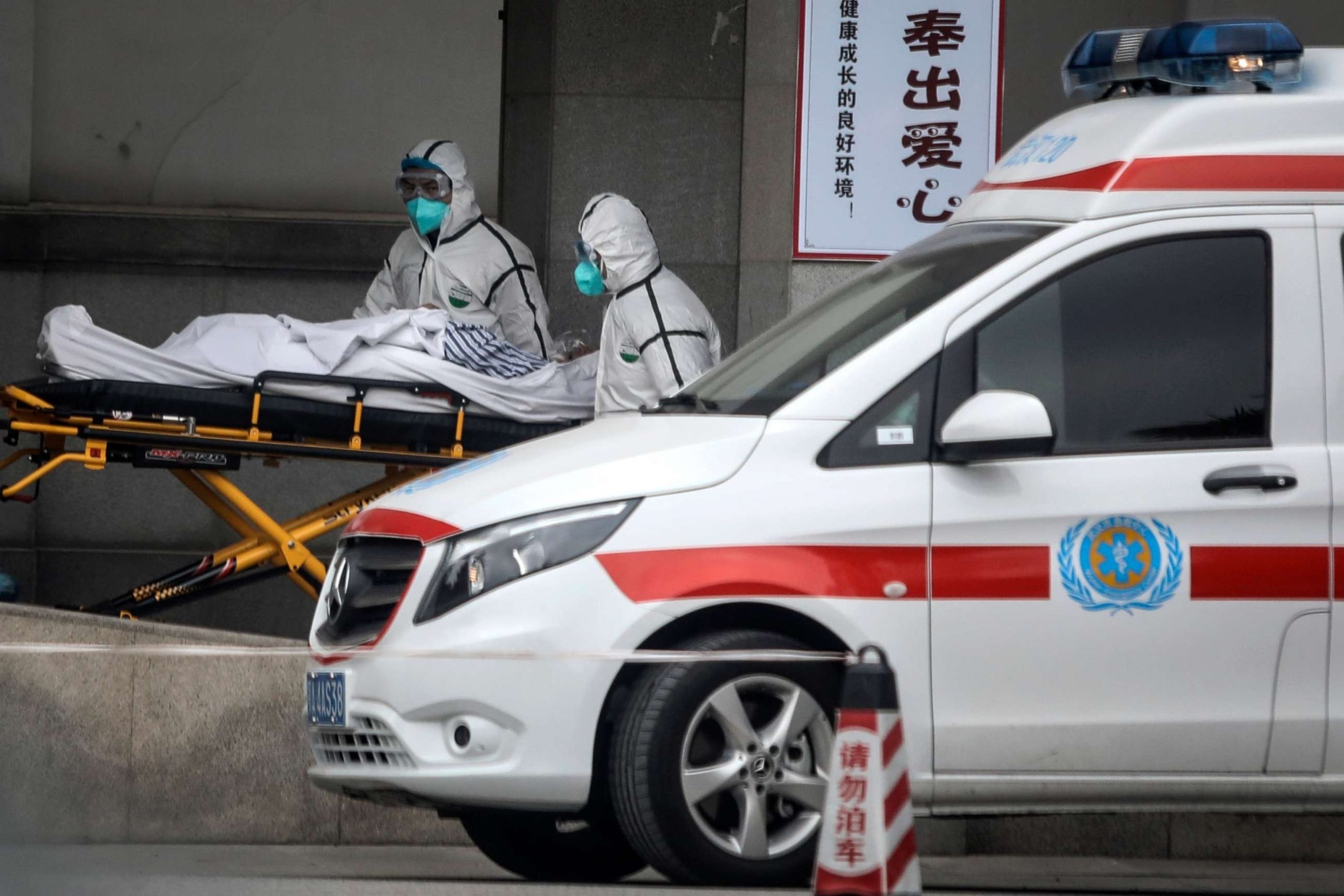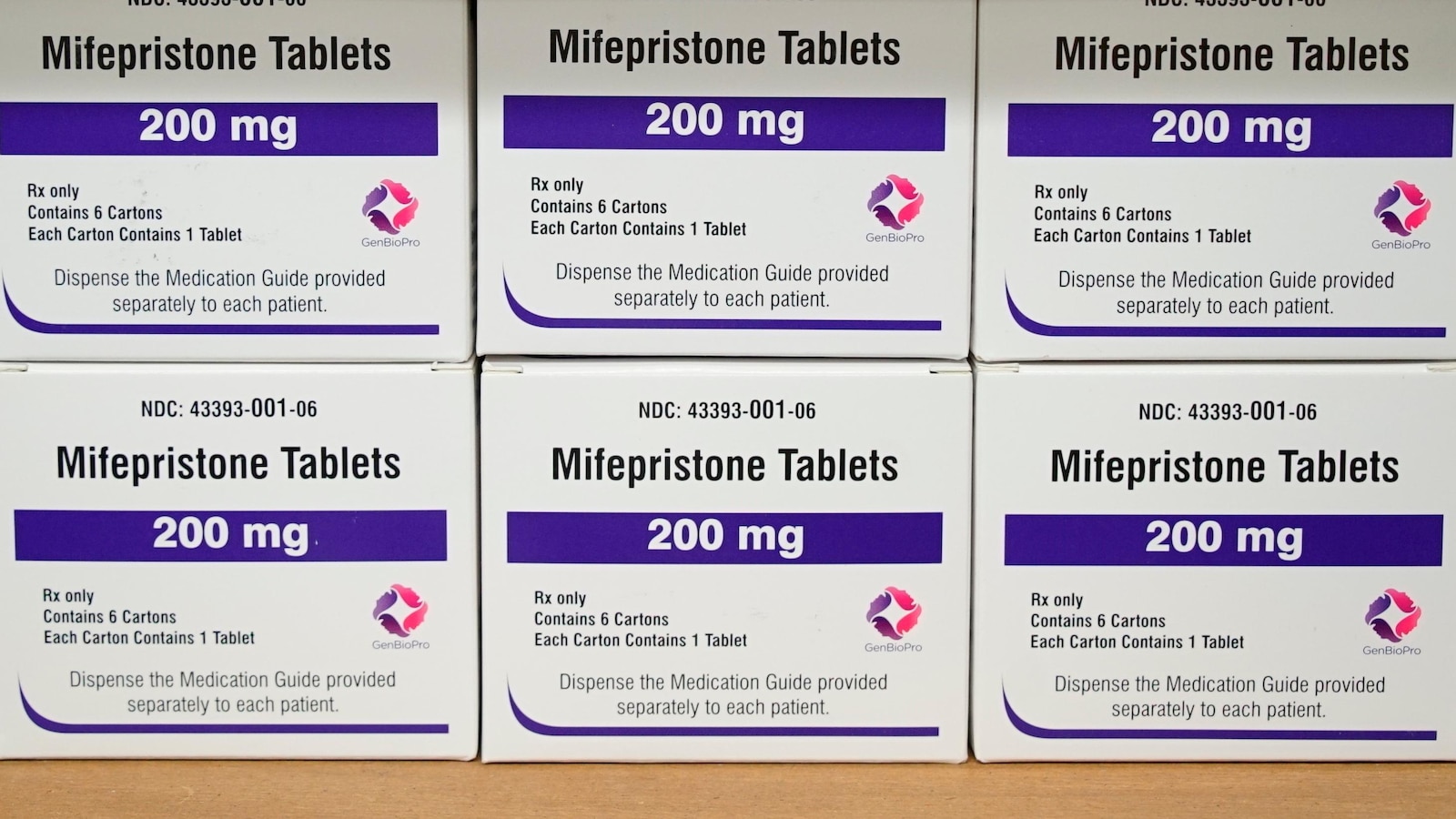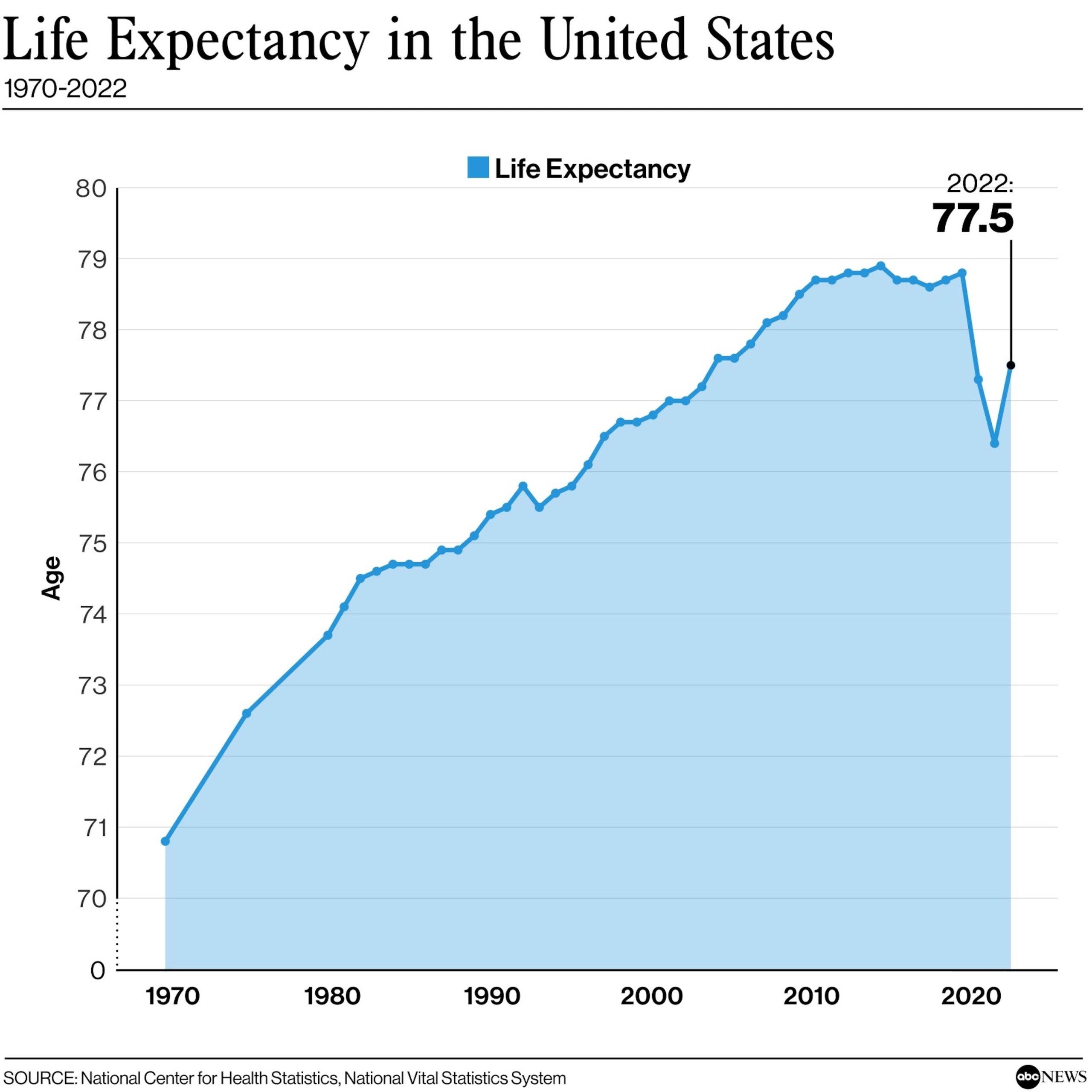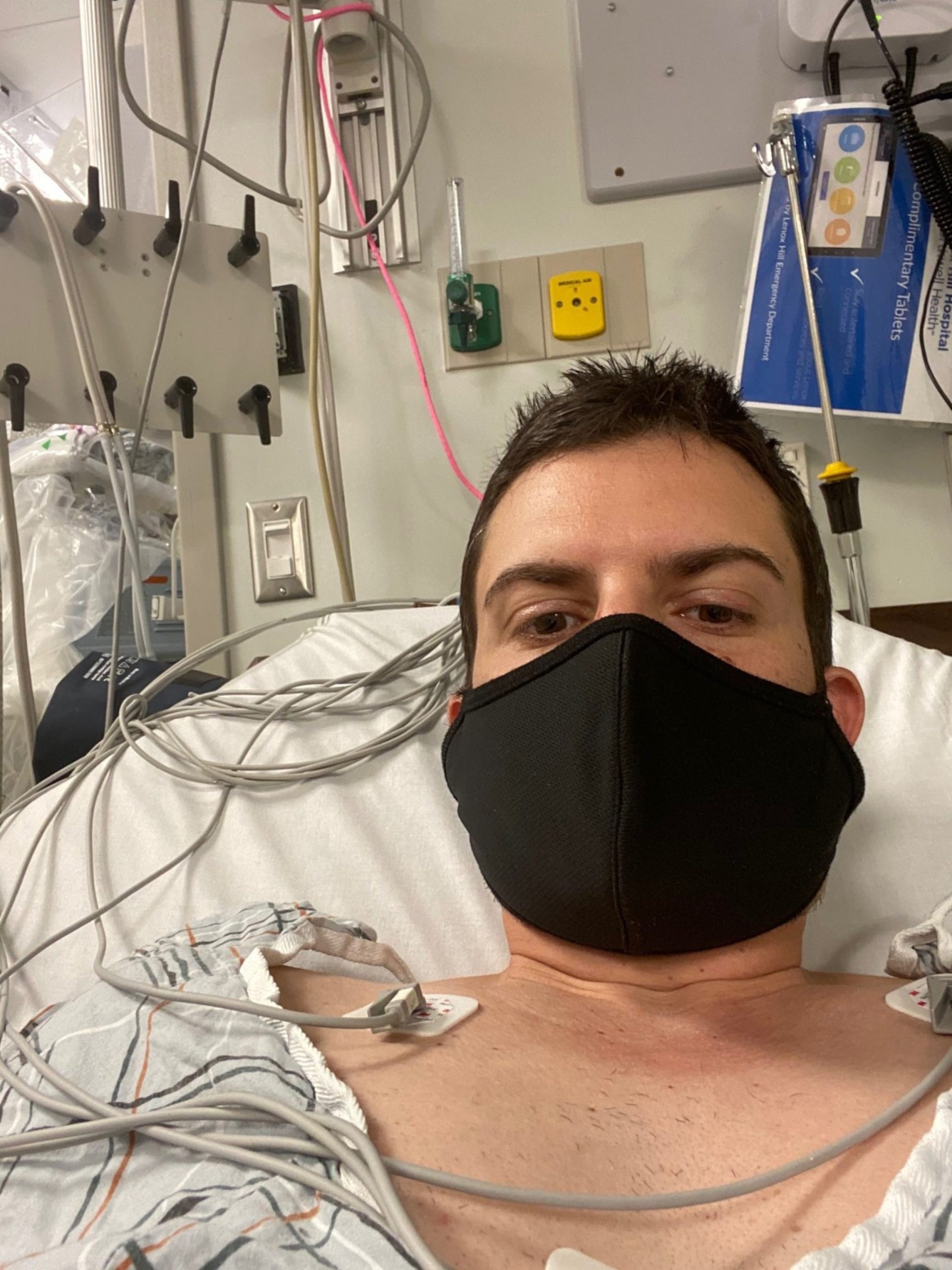Monday marks four years since the World Health Organization (WHO) declared the COVID-19 outbreak a pandemic.
Since the first cases in Wuhan, China, in 2019, there have been millions of infections and deaths around the world.
There have also been major successes including vaccines for nearly all age groups, the development of antiviral drugs to treat those at risk of severe illness and the proliferation of at-home tests.
ABC News takes a look back at the some of the most important moments over the last four-plus years:
Dec. 31, 2019
The World Health Organization office in China is notified about a mysterious pneumonia-like illness that originated in Wuhan and has been spreading.
Jan. 7, 2020
Chinese public health officials identify a new type of coronavirus as the source of the outbreak.
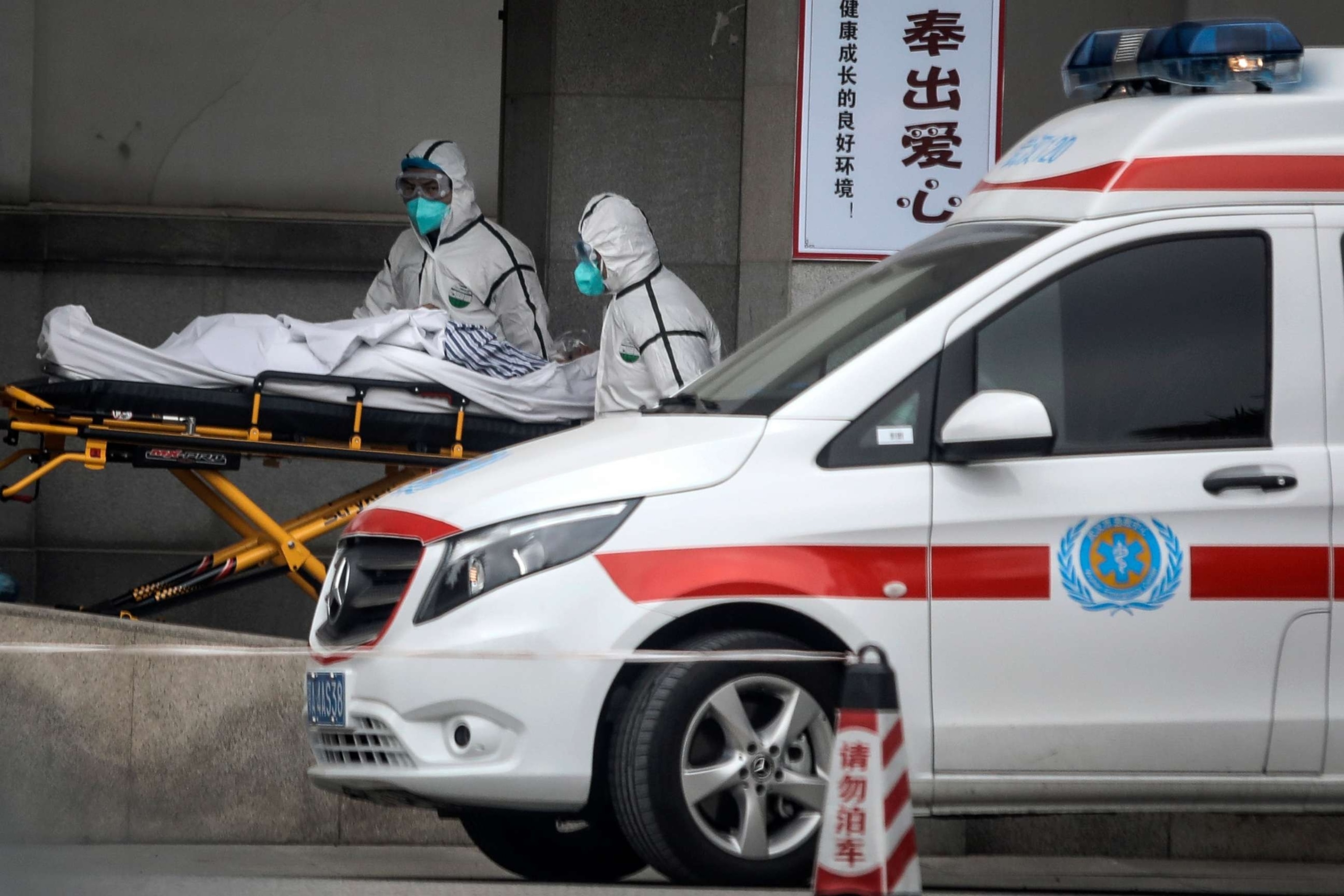
In this Jan. 17, 2020, file photo, medical staff transfer patients to Jin Yintan hospital in Wuhan, Hubei, China, after a second person in the city had died of a pneumonia-like virus since the outbreak started in December.
Getty Images, FILE
Jan. 10, 2020
WHO begins using 2019-nCoV to refer to the outbreak. Because the disease is similar to the SARS virus, it is called SARS-CoV-2.
Jan. 20, 2020
The U.S. confirms its first case in a man in his 30s in Washington state, who developed symptoms after a trip to Wuhan.
Jan. 30, 2020
The WHO declares the outbreak of the virus to be a Public Health Emergency of International Concern. The Centers for Disease Control and Prevention (CDC) confirms person-to-person transmission in the U.S.
Feb. 11, 2020
The WHO proposes calling the disease caused by the virus COVID-19, which stands for coronavirus disease 2019.
March 11, 2020
The WHO classifies COVID-19 as a pandemic.
March 13, 2020
President Donald Trump declares the COVID-19 outbreak a national emergency.
March 19, 2020
The U.S. Department of State issues a global Level 4 “Do Not Travel” health advisory.
April 2, 2020
More than 1 million people worldwide have confirmed cases of COVID-19.
April 3, 2020
The CDC announces new guidelines for mask wearing and advises all Americans to wear a mask outside of the home.
May 15, 2020
President Trump announces Operation Warp Speed, a national program to fast-track the development, manufacturing and distribution of COVID-19 tests, treatments and vaccines.
May 28, 2020
The U.S. surpasses 100,000 COVID-19 deaths, a little more than four months after confirming the first known case.
Aug. 6, 2020
The State Department lifts the global Level 4 “Do Not Travel” health advisory.
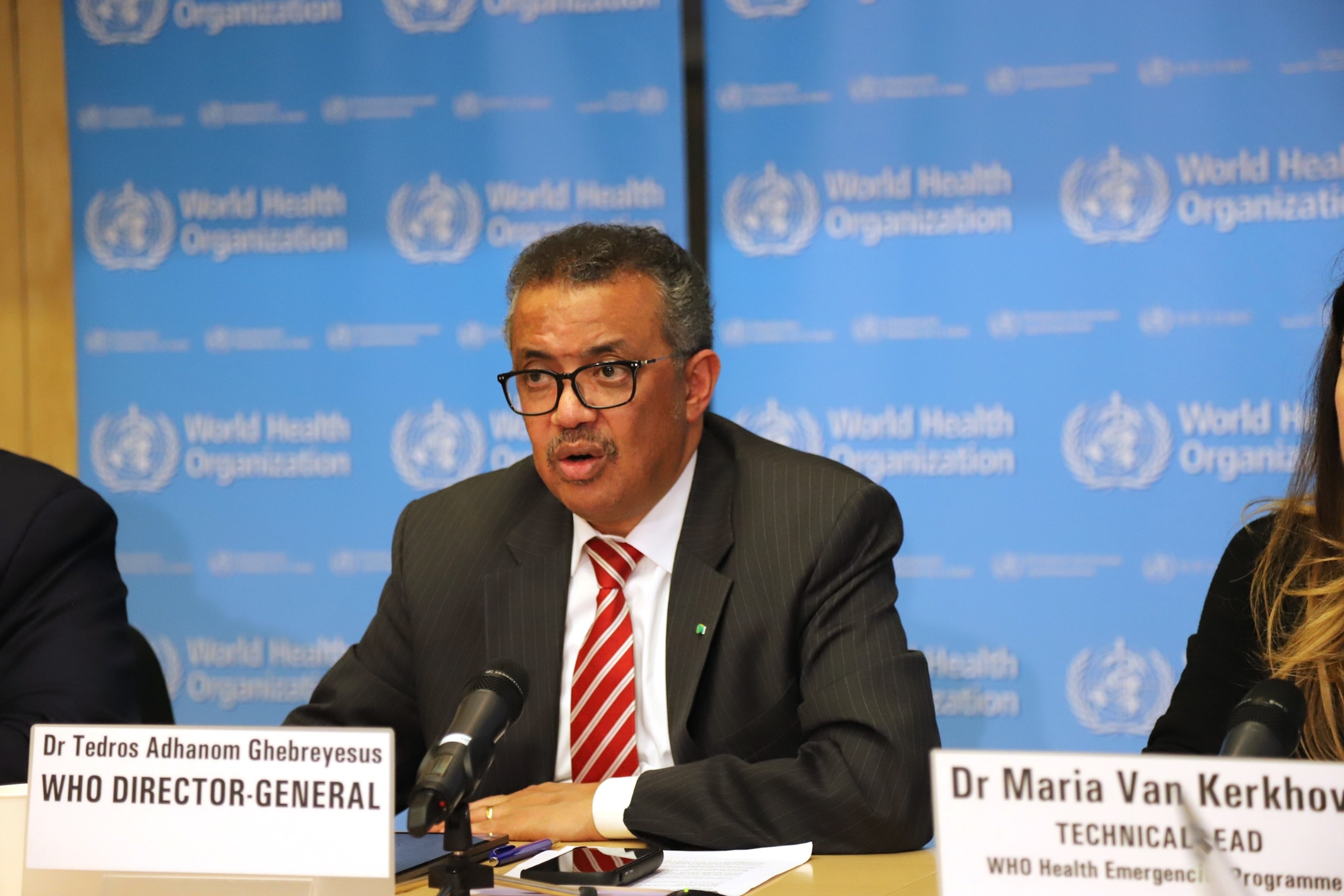
In this March 11, 2020, file photo, World Health Organization Director-General Tedros Adhanom Ghebreyesus speaks at a press conference in Geneva, Switzerland, announcing that the COVID-19 outbreak can be characterized as a “pandemic” as the virus spreads increasingly worldwide.
Xinhua via Getty Images, FILE
Aug. 28, 2020
The first case of COVID-19 reinfection in the U.S. is reported by the Nevada State Public Health Laboratory.
Sept. 28, 2020
Global COVID-19 deaths surpass 1 million.
Dec. 11, 2020
FDA grants Pfizer-BioNTech the first EUA for a COVID-19 vaccine for those aged 16 and older.
Dec. 14, 2020
Nurse Sandra Lindsay is the first person to receive a COVID-19 vaccine in the U.S. as distribution begins.
Dec. 18, 2020
The FDA grants the same EUA to Moderna for its vaccine for those aged 18 and older.
Jan. 12, 2021
The CDC says all air passengers entering the U.S. must present a negative COVID-19 test result.
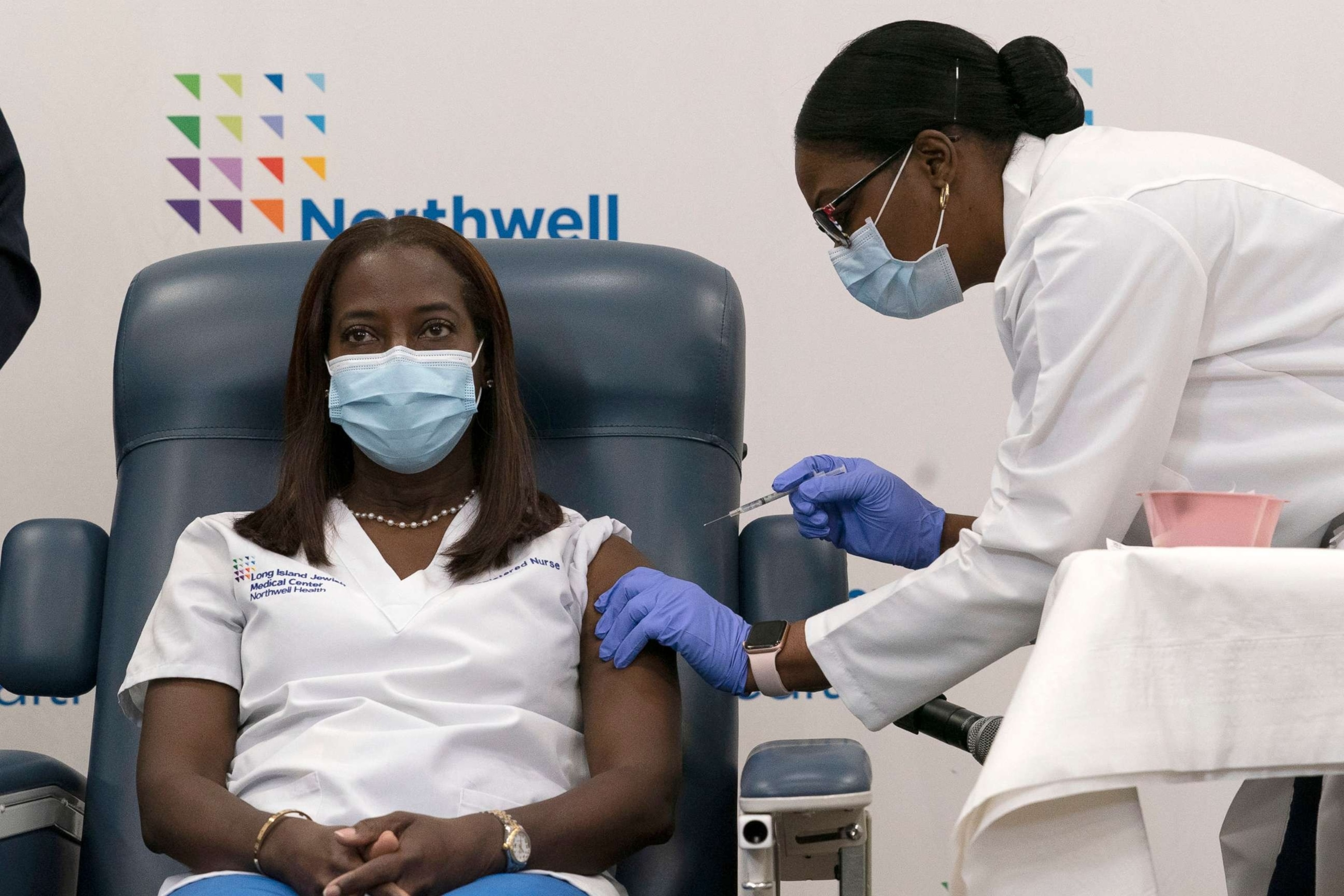
In this Dec. 14, 2020, file photo, Sandra Lindsay, a nurse at Long Island Jewish Medical Center, is inoculated with the COVID-19 vaccine by Dr. Michelle Chester, in Queens, New York.
Pool via Getty Images, FILE
Feb. 27, 2021
The FDA issues an EUA for the Johnson & Johnson COVID-19 vaccine for those aged 18 and older.
May 10, 2021
The FDA expands the EUA for the Pfizer-BioNTech COVID-19 vaccine to adolescents between ages 12 and 15.
May 13, 2021
CDC guidance is updated for fully vaccinated people, ending indoor mask requirements.
May 26, 2021
President Joe Biden issues a statement saying the U.S. intelligence community cannot determine whether COVID-19 originated in animals and jumped to humans or came from a laboratory accident, with some believing the former and others the latter.
Aug. 12, 2021
The FDA amends EUA for Pfizer-BioNTech and Moderna COVID-19 vaccines to authorize additional booster for certain groups with weakened immune systems.
Sept. 22, 2021
The FDA authorizes a booster dose of Pfizer-BioNTech COVID-19 vaccine for certain groups.
Oct. 6, 2021
The WHO publishes a clinical case definition of “post COVID-19 condition” or long COVID.
Oct. 20, 2021
The FDA authorizes a booster dose of the Moderna and J&J COVID-19 vaccines for certain groups.
Oct. 29, 2021
The FDA authorizes emergency use of Pfizer-BioNTech’s COVID-19 vaccine for children ages 5 to 11.
Nov. 8, 2021All non-citizens who are traveling to the U.S. are now required to be fully vaccinated and provide proof of their vaccination status to fly to the U.S., the White House announces. All travelers will continue to be required to show a negative pre-departure COVID-19 test taken no more than three days before they board their flights.
Nov. 19, 2021
The CDC updates guidance to recommend everyone aged 18 and older to get a COVID-19 booster.
Dec. 9, 2021
The FDA expands eligibility to allow 16- and 17-year-olds to receive the Pfizer-BioNTech COVID-19 boosters.
Dec. 22-23, 2021
The FDA issues EUA for two oral antivirals to treat COVID-19 — Merck’s molnupiravir and Pfizer’s Paxlovid — for those with mild to moderate illness at high risk of severe disease.
Jan. 3, 2022
The FDA expands the EUA for Pfizer-BioNTech’s booster to include 12-to-15-year-olds and a third primary dose for some immunocompromised children ages 5 to 11.
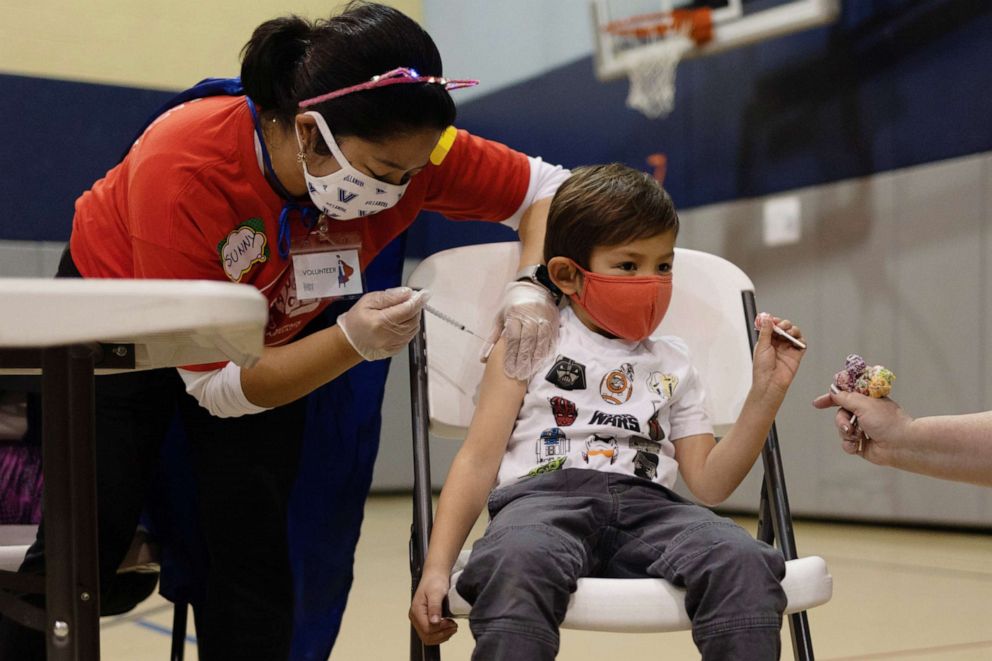
In this Dec. 5, 2021, file photo, a 5-year-old boy receives the Pfizer-BioNTech COVID-19 vaccine in Lansdale, Penn.
Hannah Beier/Reuters, FILE
Jan. 4, 2022
The U.S. reports the first day of more than 1 million daily COVID-19 cases during the omicron wave.
Jan. 15, 2022
The U.S. reaches a peak of weekly new hospital admissions for COVID-19 at 150,650 during the omicron wave.
Jan. 18, 2022The White House launches a program to mail at-home COVID-19 tests directly to Americans’ homes with a new website.
March 8, 2022
The Biden administration announces the launch of “Test to Treat” so people at high-risk for developing severe COVID-19 and complications can get tested at a pharmacy and, if positive, receive antiviral pills on the spot for free.
March 29, 2022
The FDA authorizes a second booster dose of either the Pfizer-BioNTech or the Moderna COVID-19 vaccine for people aged 60 and older and certain immunocompromised groups.
May 12, 2022COVID-19 deaths in the U.S. surpass 1 million. President Biden orders flags to be flown at half-staff.
May 17, 2022FDA expands eligibility for a booster dose of Pfizer-BioNTech’s COVID-19 vaccine to children ages 5 to 11.
June 10, 2022
The CDC rescinds its order requiring a negative COVID-19 test result before boarding a flight to the U.S., taking effect on June 12.
June 17, 2022
The FDA grants EUA for Pfizer-BioNTech’s COVID-19 vaccine for children ages 6 months to 5 years and for Moderna’s COVID-19 vaccine for children ages 6 months to 6 years.
Aug. 31, 2022
The FDA authorizes Pfizer-BioNTech and Moderna bivalent COVID-19 vaccines to use as a booster dose for those ages 12 and older and those ages 17 and older, respectively.
Oct. 12, 2022
The FDA authorizes an updated bivalent COVID-19 vaccine for children aged 5 and older for the Pfizer-BioNTech vaccine and for children aged 6 and older for the Moderna vaccine.
Dec. 8, 2022
The FDA authorizes bivalent vaccines to use as a booster dose for children under age 5.
April 10, 2023
President Biden signs H.J.Res.7, ending the national emergency related to the COVID-19 pandemic.
May 5, 2023
The WHO downgrades COVID-19 from being a Public Health Emergency of International Concern but continues to classify it as a pandemic. The CDC says it will no longer track transmission levels.
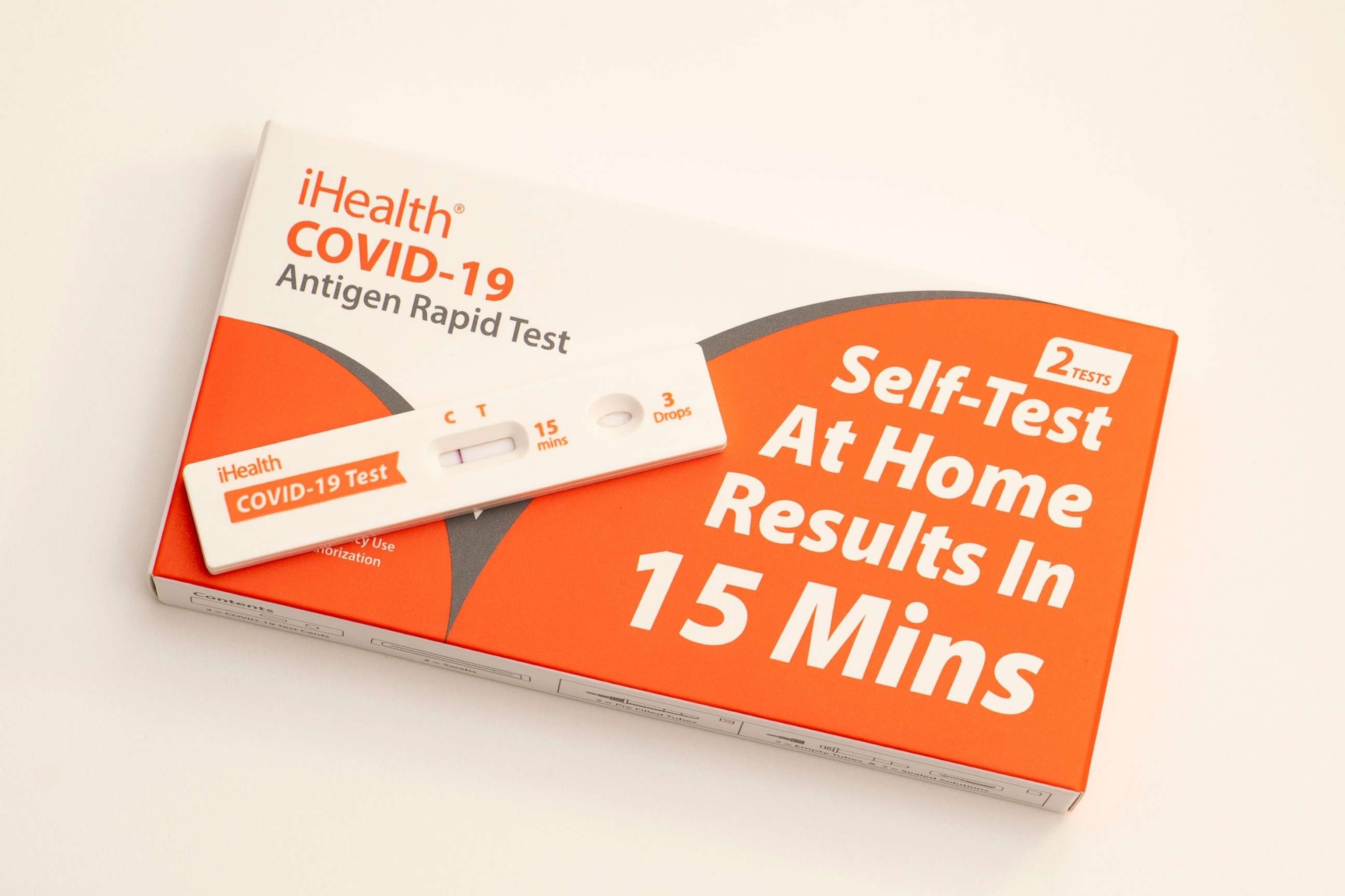
In this undated file photo, a COVID-19 at home self test kit is shown.
UIG via Getty Images, FILE
Sept. 11, 2023
The FDA authorizes and approves an updated COVID vaccine for all Americans ages 6 months and older.
May 11, 2023
The public health emergency designation in the U.S. for COVID-19 expires.
Nov. 10, 2023
The WHO updates its COVID treatment guidance, including recommending use of the antiviral drugs remdesivir and molnupiravir for only severe cases.
March 1, 2024
People who are recovering from COVID-19 no longer need to remain isolated for five days after symptoms, according to new CDC guidance.
March 10, 2024The Johns Hopkins Coronavirus Resource Center stops collecting data for its famous COVID-19 dashboard.
As the world continues to grapple with the ongoing COVID-19 pandemic, it is important to reflect on the evolution of the virus and the global response over the past four years. From its initial emergence in late 2019 to the present day, COVID-19 has had a profound impact on societies, economies, and healthcare systems worldwide.
December 2019: The first cases of a mysterious pneumonia-like illness are reported in Wuhan, China. The virus is later identified as a novel coronavirus, named SARS-CoV-2, which causes the disease known as COVID-19.
January 2020: The World Health Organization (WHO) declares COVID-19 a Public Health Emergency of International Concern. Countries around the world begin implementing travel restrictions and quarantine measures to contain the spread of the virus.
March 2020: The WHO declares COVID-19 a global pandemic as cases surge in Europe and the United States. Lockdowns and social distancing measures are implemented in many countries to slow the spread of the virus.
May 2020: The first wave of COVID-19 cases begins to subside in many countries, leading to the gradual easing of restrictions. However, concerns about a potential second wave loom large.
December 2020: The first COVID-19 vaccines are authorized for emergency use in several countries, offering hope for an end to the pandemic. Mass vaccination campaigns begin in early 2021.
March 2021: The emergence of new variants of the virus raises concerns about vaccine efficacy and the potential for increased transmissibility. Countries ramp up efforts to track and contain these variants.
September 2021: Despite widespread vaccination efforts, COVID-19 cases continue to rise in many parts of the world, fueled by vaccine hesitancy, misinformation, and inequitable distribution of vaccines.
December 2021: The Omicron variant, a highly transmissible strain of the virus, is identified in South Africa and quickly spreads to other countries. Governments impose new restrictions and booster shot campaigns are accelerated.
March 2022: The global death toll from COVID-19 surpasses 6 million, highlighting the devastating toll of the pandemic on human life. Efforts to increase vaccine access in low-income countries intensify.
September 2022: As vaccination rates increase and public health measures remain in place, COVID-19 cases begin to decline in many parts of the world. Governments cautiously lift restrictions while remaining vigilant against future waves of the virus.
As we look back on the evolution of COVID-19 over the past four years, it is clear that the pandemic has been a complex and challenging global crisis. From the initial outbreak in Wuhan to the emergence of new variants, the response to COVID-19 has required coordination, cooperation, and innovation on a scale never before seen. As we continue to navigate this unprecedented situation, it is crucial that we learn from the past and work together to build a more resilient and prepared world for the future.
